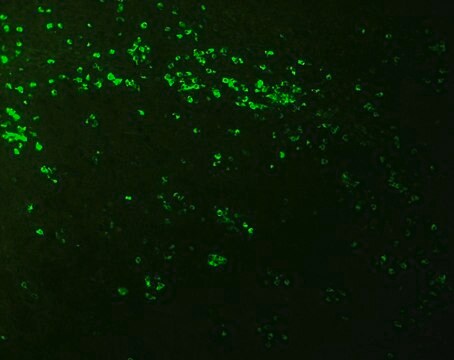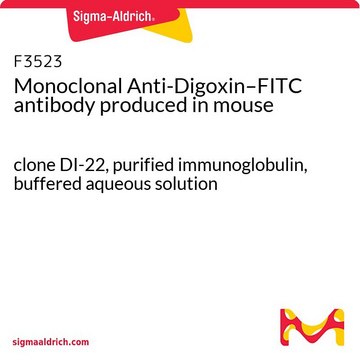C5585
Monoclonal Anti-Biotin–Cy3™ antibody produced in mouse
clone BN-34, purified immunoglobulin, buffered aqueous solution
Sinônimo(s):
Monoclonal Anti-Biotin
About This Item
Produtos recomendados
fonte biológica
mouse
conjugado
CY3 conjugate
forma do anticorpo
purified immunoglobulin
tipo de produto de anticorpo
primary antibodies
clone
BN-34, monoclonal
Formulário
buffered aqueous solution
técnica(s)
immunohistochemistry (formalin-fixed, paraffin-embedded sections): 1:400
indirect immunofluorescence: 1:200
Isotipo
IgG1
Condições de expedição
wet ice
temperatura de armazenamento
2-8°C
modificação pós-traducional do alvo
unmodified
Procurando produtos similares? Visita Guia de comparação de produtos
Descrição geral
Imunogênio
Aplicação
- fluorescent microscopy
- RNA fluorescence in situ hybridization (FISH){36
- immunostaining
In some applications, localization of biotinylated probes with avidin produces high background levels. Anti-biotin reagents may be substituted for avidin to decrease non-specific binding.
Ações bioquímicas/fisiológicas
forma física
Informações legais
Exoneração de responsabilidade
Não está encontrando o produto certo?
Experimente o nosso Ferramenta de seleção de produtos.
Código de classe de armazenamento
10 - Combustible liquids
Classe de risco de água (WGK)
nwg
Ponto de fulgor (°F)
Not applicable
Ponto de fulgor (°C)
Not applicable
Equipamento de proteção individual
Eyeshields, Gloves, multi-purpose combination respirator cartridge (US)
Escolha uma das versões mais recentes:
Já possui este produto?
Encontre a documentação dos produtos que você adquiriu recentemente na biblioteca de documentos.
Nossa equipe de cientistas tem experiência em todas as áreas de pesquisa, incluindo Life Sciences, ciência de materiais, síntese química, cromatografia, química analítica e muitas outras.
Entre em contato com a assistência técnica








